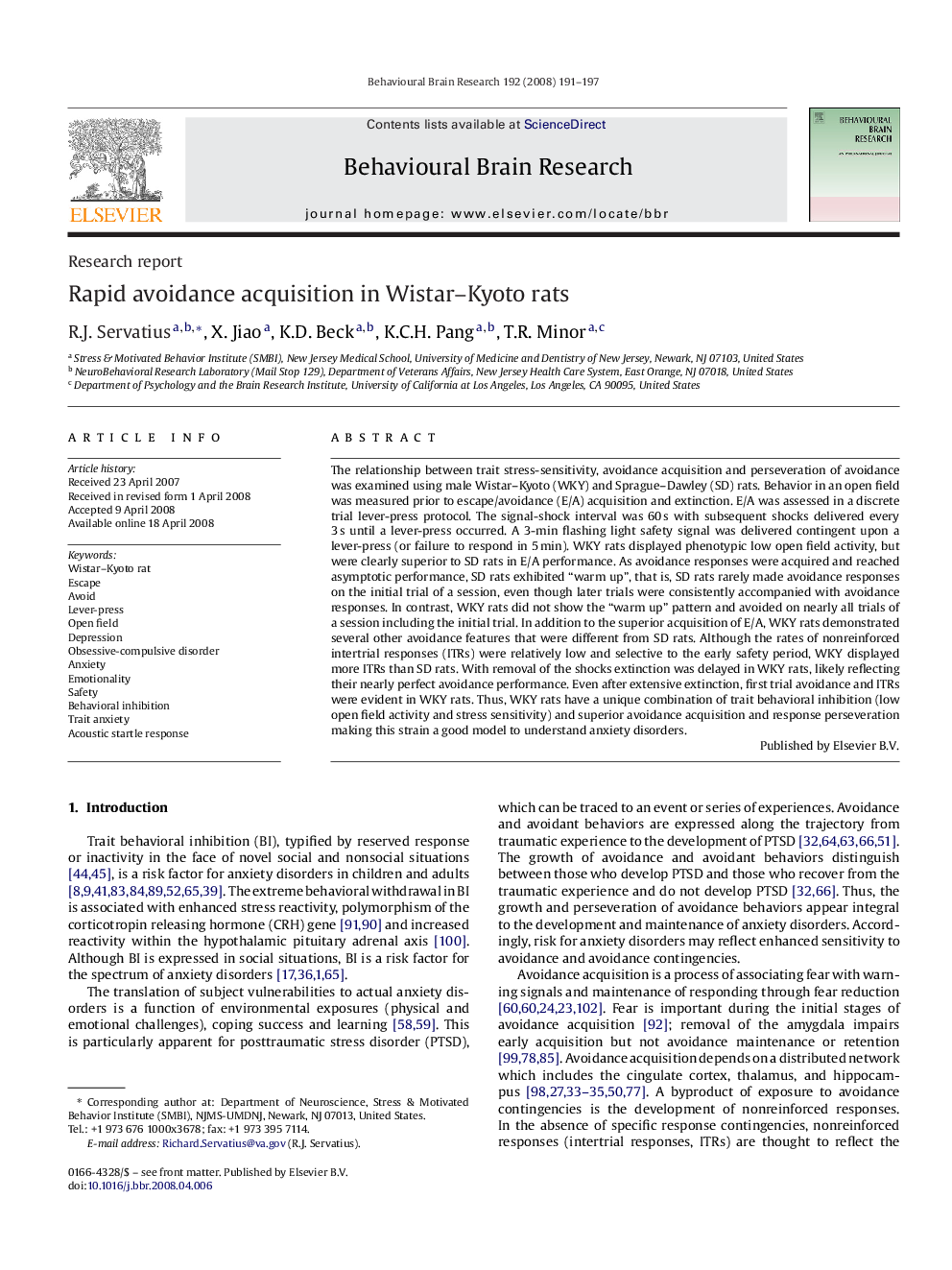| Article ID | Journal | Published Year | Pages | File Type |
|---|---|---|---|---|
| 4314973 | Behavioural Brain Research | 2008 | 7 Pages |
The relationship between trait stress-sensitivity, avoidance acquisition and perseveration of avoidance was examined using male Wistar–Kyoto (WKY) and Sprague–Dawley (SD) rats. Behavior in an open field was measured prior to escape/avoidance (E/A) acquisition and extinction. E/A was assessed in a discrete trial lever-press protocol. The signal-shock interval was 60 s with subsequent shocks delivered every 3 s until a lever-press occurred. A 3-min flashing light safety signal was delivered contingent upon a lever-press (or failure to respond in 5 min). WKY rats displayed phenotypic low open field activity, but were clearly superior to SD rats in E/A performance. As avoidance responses were acquired and reached asymptotic performance, SD rats exhibited “warm up”, that is, SD rats rarely made avoidance responses on the initial trial of a session, even though later trials were consistently accompanied with avoidance responses. In contrast, WKY rats did not show the “warm up” pattern and avoided on nearly all trials of a session including the initial trial. In addition to the superior acquisition of E/A, WKY rats demonstrated several other avoidance features that were different from SD rats. Although the rates of nonreinforced intertrial responses (ITRs) were relatively low and selective to the early safety period, WKY displayed more ITRs than SD rats. With removal of the shocks extinction was delayed in WKY rats, likely reflecting their nearly perfect avoidance performance. Even after extensive extinction, first trial avoidance and ITRs were evident in WKY rats. Thus, WKY rats have a unique combination of trait behavioral inhibition (low open field activity and stress sensitivity) and superior avoidance acquisition and response perseveration making this strain a good model to understand anxiety disorders.
